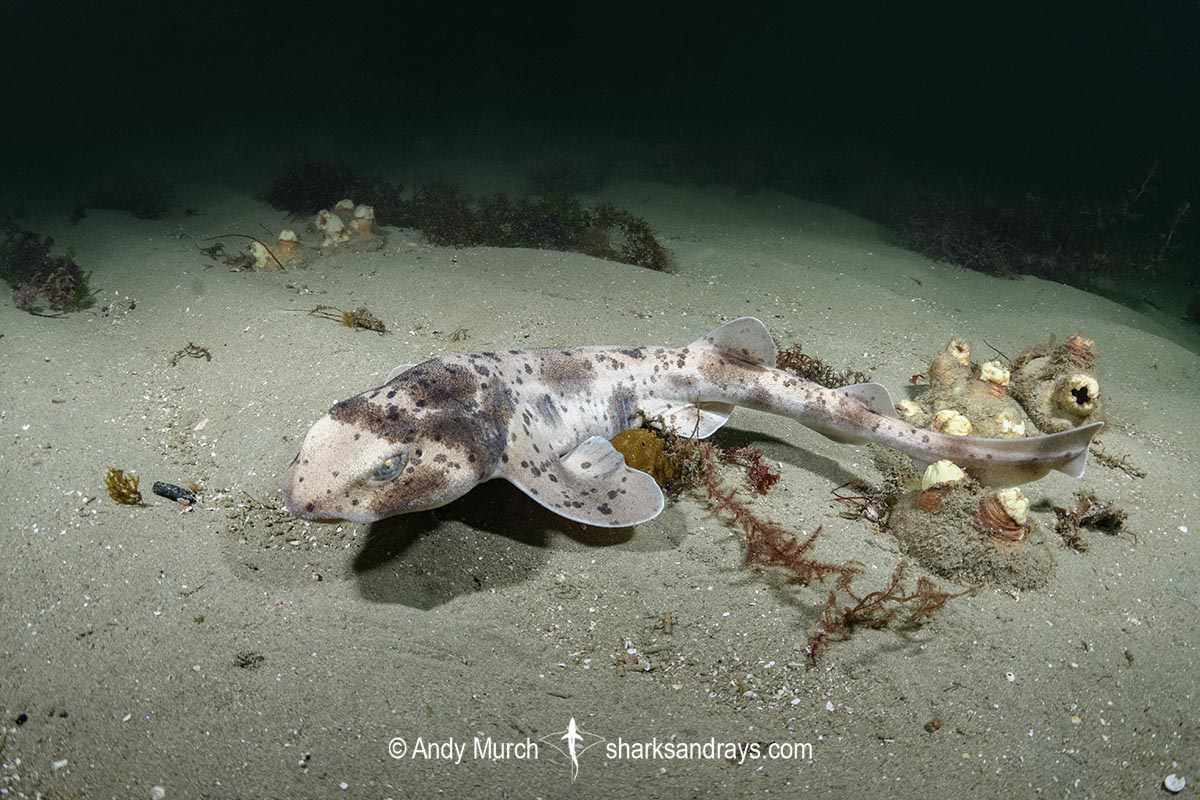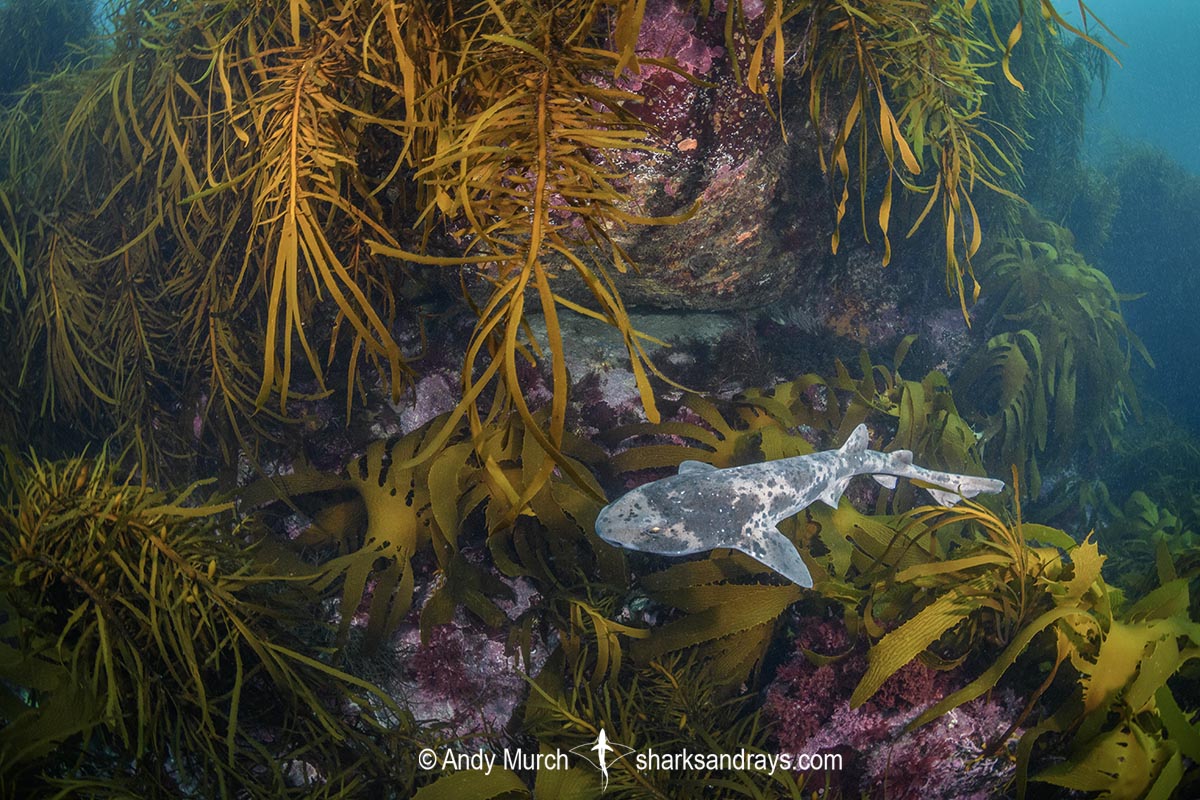Common name(s)
Australian Swellshark, Draughtboard Shark.
Identification
A large swell shark with a fairly stout body. Snout bluntly rounded. Prominent ridges over eyes. Mouth width much greater than snout length. Nasal flaps relatively short and square; extending roughly half way to mouth. First dorsal origin approximately level with middle of pelvic fin base. Second dorsal fin origin slightly posterior of anal fin base. Anal fin larger than second dorsal. Anal fin apex narrowly rounded. Lower caudal lobe apex rounded. Upper caudal subterminal notch well defined.
Dorsal surface beige or light pinkish-grey, with large, irregular, dark blotches and small, irregular darker spots. Pattern usually includes a blotch below each eye and a large saddle across nape, plus one or two smaller saddles along midline, and one or two flank blotches. Ventrum pale. Adults often have a dark irregular stripe along ventral midline.
Egg Case Identification
Egg case long and thin, subtly lyre-shaped, with many deep folds (transverse ridges) along entire length. Long, tightly curled tendrils attach base of egg case to kelp and reef. Color creamy white.
Size
Maximum length at least 100cm, possibly to 150cm. Size at birth 16-18cm.

Conservation Status
LEAST CONCERN
Although Cephaloscyllium laticeps occurs in areas with significant pressure from fisheries, it is usually discarded alive and is thought to have a high post-capture survival rate.

Habitat
Temperate inshore environments on sandy bottoms, rocky reefs, and kelp forests. From shallow bays to at least 60m.
Distribution
The Australian Swellshark occurs in the southwest Pacific and southeast Indian Ocean. Confined to the coast of southern Australia from Recherche Archipelago in Western Australia to Jervis Bay in New South Wales, including Tasmania.
Reproduction
Oviparous. Eggs are deposited year round. Hatching occurs after 12 months. Egg cases are attached to seaweed and static invertebrates.
Diet
The Australian Swellshark diet includes small fishes, crustaceans, and squid.
Behavior
Juveniles mostly inhabit sandy bays where they sit in the open. Adults move to reefs and rest under overhangs.
Reaction to divers
Fairly easy to approach when resting on the reef. Juvenile usually bolt when approached on the sand.
Diving logistics
Although the Australian Swellshark is occasionally seen along the coast of southern Australia, it is far easier to find in Tasmania. Adults are fairly common on kelpy reefs around the Tasman Peninsula. Juveniles can be seen on shore dives in the Derwent Estuary such as Blackman’s Bay and Rosny Point. Bicheno Bay is reputedly an excellent spot to find this species, but I did not see any when I dove there, other than egg cases.







